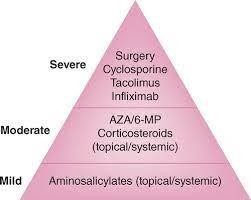A nurse is providing teaching about home care to the family of a client who has dementia. Which of the following statements should the nurse make?
"Disguise exit doors in his home with posters."
"Weigh the client once per month."
"Keep the lights in his room off at night."
"Offer him several food choices prior to meal times."
The Correct Answer is A
Choice A rationale:
People with dementia may become disoriented and attempt to leave their homes. Disguising exit doors with posters or camouflage can help prevent wandering and promote safety.
Choice B rationale:
Weighing the client once per month is not directly related to dementia care and safety.
Choice C rationale:
Keeping lights on at night can help prevent falls and confusion in people with dementia.
Choice D rationale:
Offering several food choices prior to meal times can be overwhelming for a person with dementia. A simpler approach may be more appropriate.
Nursing Test Bank
Naxlex Comprehensive Predictor Exams
Related Questions
Correct Answer is B
Explanation
Choice A rationale
Omeprazole is a proton pump inhibitor used to reduce stomach acid production and is not typically used for treating bloody stools in inflammatory bowel disease.
Choice B rationale:
Infliximab is used to treat inflammatory bowel disease and can help manage symptoms such as bloody stools by suppressing the inflammatory response.
Choice C rationale:
Ondansetron is an antiemetic used for nausea and vomiting, not related to bloody stools.
Choice D rationale:
Metoclopramide is used to treat nausea, vomiting, and gastrointestinal motility disorders, not specifically indicated for bloody stools.

Correct Answer is C
Explanation
Choice A rationale:
Maternal hemoglobin and hematocrit levels are important indicators of the mother's health but are not direct indicators of fetal well-being.
Choice B rationale:
A Coombs test is performed on newborns to assess for hemolytic disease, not to monitor fetal well-being.
Choice C rationale:
A biophysical profile assesses multiple parameters of fetal well-being, including fetal heart rate, fetal movement, fetal breathing, amniotic fluid volume, and fetal tone.
Choice D rationale:
An alpha-fetoprotein test is a screening test for neural tube defects and chromosomal abnormalities but is not typically used to monitor fetal well-being in hypertensive pregnancies.
Whether you are a student looking to ace your exams or a practicing nurse seeking to enhance your expertise , our nursing education contents will empower you with the confidence and competence to make a difference in the lives of patients and become a respected leader in the healthcare field.
Visit Naxlex, invest in your future and unlock endless possibilities with our unparalleled nursing education contents today
Report Wrong Answer on the Current Question
Do you disagree with the answer? If yes, what is your expected answer? Explain.
Kindly be descriptive with the issue you are facing.
